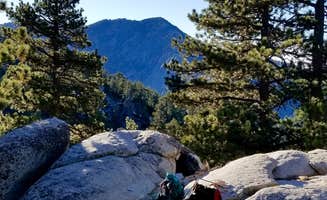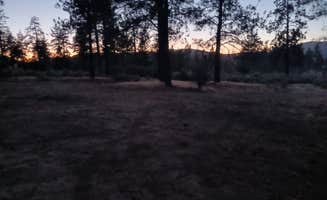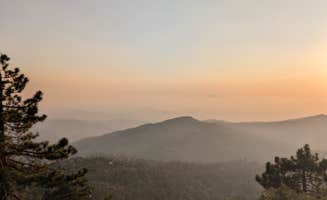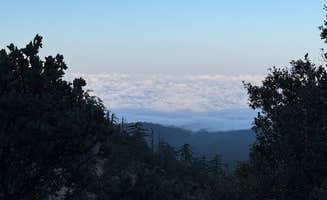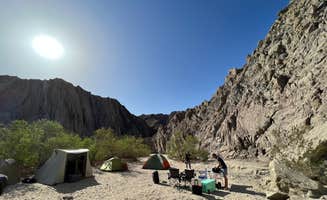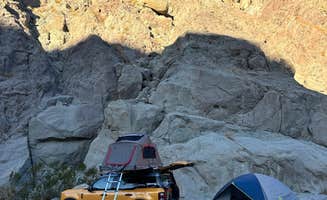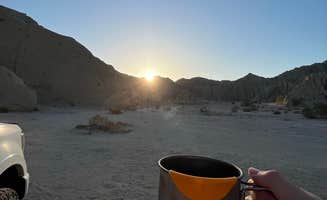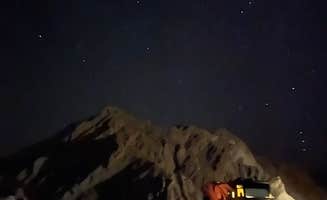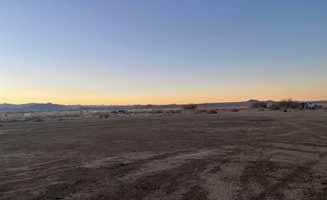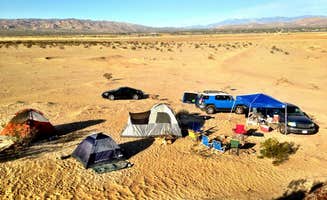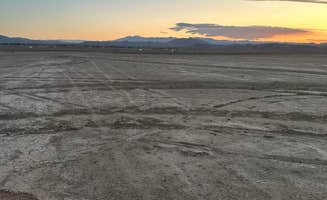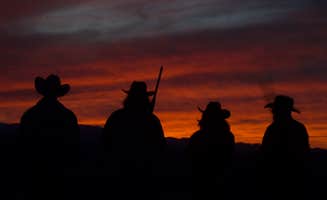Dispersed camping near Rancho Mirage, California occurs across elevations ranging from 1,400 feet in desert zones to over 5,700 feet in mountain forest areas. Temperature variations between these locations can exceed 25°F during summer months, creating microclimates that attract different wildlife and vegetation. Roads to primitive sites are often unmaintained after storms, with deep ruts developing in lake bed areas following rainfall.
What to do
Hiking in Painted Canyon: Access the unique ladder canyon trail system at the end of Painted Canyon Road where ropes and ladders help navigate the slot canyons. "Stunning diversity in color and rock formations. If you hike to the top of the loop, you'll not only feel like you've accomplished something special, but you'll also get to see the rock formations and vegetation change with elevation," notes one Painted Canyon visitor.
Wildlife viewing: Early mornings offer opportunities to spot desert wildlife near campsites. "We had hummingbirds come right up to my face! Didn't even know they lived out here. Also saw whiptail lizard," reports another Painted Canyon camper. Deer, lizards, snakes, woodpeckers, and squirrels are common in forested areas.
Stargazing from elevation: Higher mountain sites provide clearer astronomical viewing with less light pollution from the Coachella Valley. "Very nice to find a campsite this private on a weekend in southern California. Elevation is high enough that temperatures were very enjoyable (mid 80's)," mentions a camper at South Ridge Yellow Post Sites.
What campers like
Solitude in forest sites: Yellow Post sites provide genuine isolation compared to desert locations. "Yellow Post #2 – San Bernardino National Forest. Secluded, free, first-come-first-served tent site tucked deep in the forest near Hemet, CA. Site sits near a dry creek bed and has a short walk to a west-facing boulder with expansive views of the valley," explains a South Ridge visitor.
Desert lake bed camping: Flat, compact surfaces ideal for level setups with minimal preparation. "The space is huge and flat. The view is great and it was peaceful out here," states a visitor to North Joshua Tree. Campers appreciate the expansive area that allows for distance between sites.
Canyon camping environments: Protected walls reduce wind compared to open desert locations. "Stunning canyons to explore! They are marked and there's also pit toilets halfway through the main road to turnaround point," notes a Painted Canyon reviewer. The varied terrain creates unique camping experiences in each location.
What you should know
Fire restrictions vary by location: Most areas prohibit fires during summer months, but winter rules differ. "Fire bans usually in effect during summer. Great for quiet retreats, hiking, light climbing, and off-grid solitude," explains a South Ridge Yellow Post visitor. Some desert sites have makeshift fire rings from rocks.
Road conditions can change rapidly: Rain transforms many access roads, particularly in lake bed areas. "I came right after a rainstorm and it got a little hairy. Not impossible at all but just be sure to check the weather and be prepared," advises a North Joshua Tree camper.
Area-specific challenges: Each site presents unique considerations based on terrain and location. At Mecca Hills Wilderness, "If you plan to go decently far in or off the trail at all, make sure to have a 4x4 or traction boards at least. Got my camper van stuck here and even the tow truck almost got stuck."
Tips for camping with families
Choose shaded sites during warmer months: Forest locations provide natural cooling. "This is a great area. I recommend you bring extra mosquito repellent. Have fun!" advises a South Ridge Yellow Post Sites camper, highlighting the need for insect protection in forested areas.
Consider noise levels at desert sites: Open BLM lands can attract recreational vehicles and shooting. At Joshua Tree North BLM, one camper notes, "Great if your idea of camping is listening to the relaxing sound of ATV's, dirt bikes, and razors zipping across the dry lake bed all day and night." Family-friendly alternatives include sites deeper in canyons.
Watch for wildlife with children: Many areas have active animal populations. "Wildlife includes deer, lizards, snakes, woodpeckers, and lots of squirrels. Mosquitoes come out at dusk—repellent is a must," reports a South Ridge camper.
Tips from RVers
Lake bed access considerations: Avoid soft surfaces after rain, especially with heavier vehicles. "If it has rained or snowed, stay off the actual dry lake bed. It can get deeply rutted, and if wet, you will sink several inches," warns a North Joshua Tree visitor.
Dump station options: Limited facilities require planning for longer stays. "Further up Sunfair is a family run campground, wonderful people, standard site pricing ($30 dry, $55 full hookup). Convenient to have nearby because they'll let you use the dump station for $20, fill your water for $5, and shower for $10," explains a Joshua Tree Lake Dispersed Camping visitor.
Road clearance requirements: Each area has different vehicle access challenges. "Road is pretty rough. Free is always good," notes a Joshua Tree Lake Dispersed Camping reviewer. High-clearance vehicles are recommended for most primitive sites, though some areas remain accessible to standard passenger cars in dry conditions.


